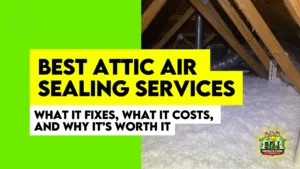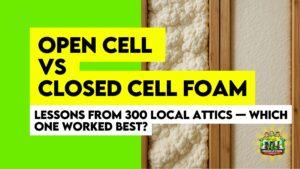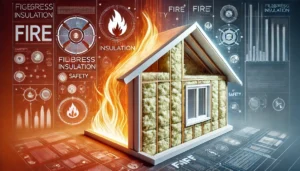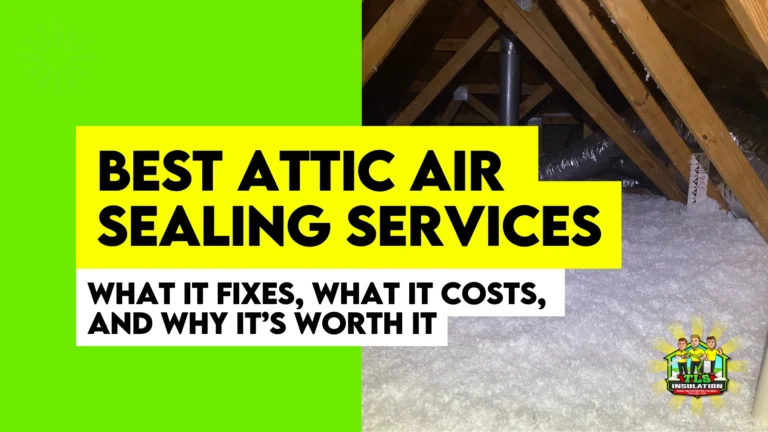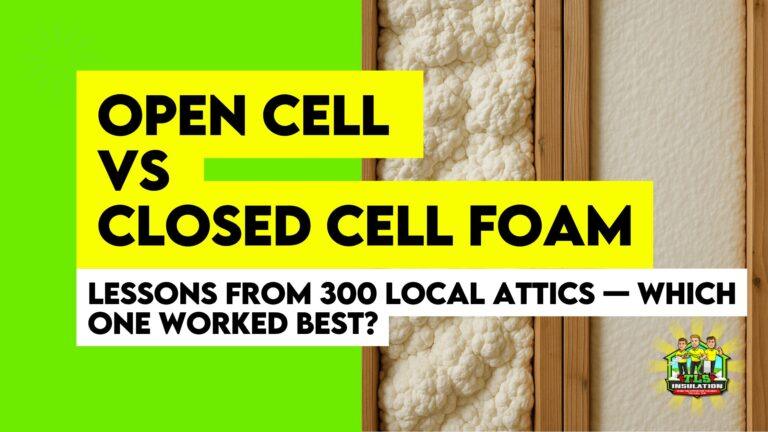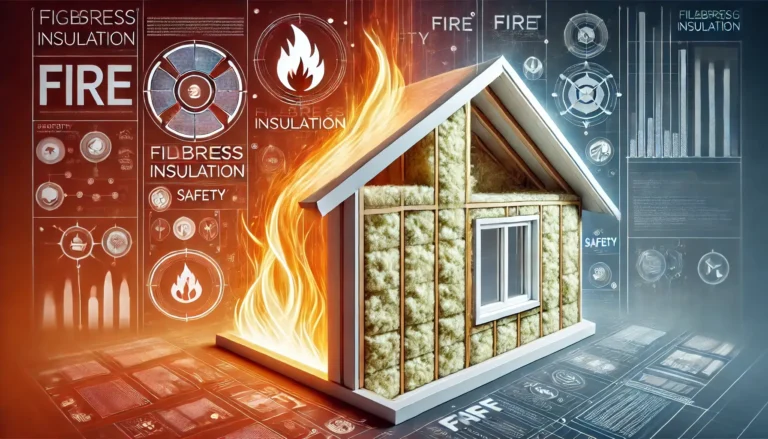So how long does insulation last? Well, in extremely hot and humid climates like Florida’s, it depends on both the type of insulation and the area it’s installed in. So long story short, the lifespan of Insulation depends on moisture, extreme temperatures and other factors.
For example, fiberglass insulation might last 20-30 years, but the humidity in areas like Miami can shorten its lifespan, while spray foam insulation can last up to 80 years even in Florida’s heat. Certain spots, like attics in Tampa, may show wear faster due to intense heat, while garage insulation in coastal regions might degrade quicker from moisture.
Whether it’s time to repair old insulation or opt for a full insulation replacement depends on what you spot. Insulation sagging, mold, or rising energy bills are all signs and deciding factors between insulation repair and replacement.
This guide will cover all the important factors related to Insulation lifespan, replacement and how to extend the life of your old insulation.
How Long Does Insulation Last? Factors Affecting Lifespan and Performance:
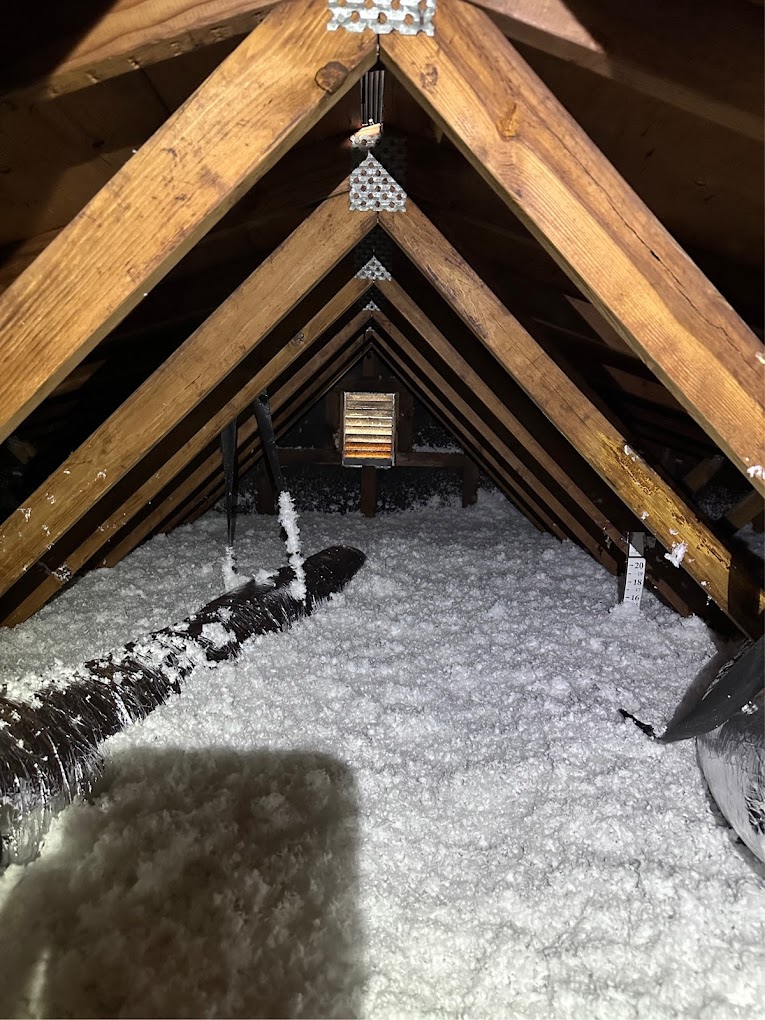
Environmental factors, such as humidity, temperature fluctuations, and exposure to UV rays, can significantly reduce the lifespan and performance of insulation materials. Studies from the U.S Department of Energy have shown that in high-moisture environments, like Florida, insulation materials degrade faster, reducing energy efficiency and structural integrity.
How Long Does Fiberglass Insulation Last?
Typically, Fiberglass insulation mostly get done in the form of Blown-in Insulation and carry a life-span of around 20-30 years, but Florida’s high humidity can affect its durability. Apart from Fiberglass materials quality, poor installation can also cause sagging or compacting, reducing its effectiveness. That’s why it’s always advisable to choose a professional blow in installer, making your investments fruitful.
However, it still depends on the area where it is installed. For example, if installed in attics, the heat and moisture in Florida’s climate can accelerate degradation, leading to fiberglass blown-in insulation replacement in attic earlier than expected. Proper ventilation and moisture control can help extend the lifespan. To better understand your investment, consider the average cost for blown-in insulation in Florida.
How Long Does Cellulose Insulation Last?
When treated for fire and pest resistance, cellulose insulation can last around 20-30 years. However, in high-moisture environments like Florida, cellulose can absorb water and lose effectiveness quicker.
If it’s not installed with a vapor barrier, the insulation can settle and compact, significantly shortening its lifespan. Cellulose attic insulation replacement might be needed sooner if moisture exposure is persistent.
How Long Does Spray Foam Insulation Last?
Spray foam insulation boasts an impressive lifespan of up to 80 years when installed correctly, even in Florida’s extreme heat and humidity. Its ability to resist moisture makes it one of the best options for the state’s climate.
However, improper installation or exposure to UV rays can cause it to crack or break down over time, which could lead to the need for insulation replacement earlier than its expected lifespan.
Other Old Insulation Types
Old insulation types like vermiculite or mineral wool were commonly used decades ago but don’t perform well in modern environments, especially under the extreme conditions of Florida’s attics and garages.
They degrade faster, have poor fire resistance, and often require attic insulation cleaning and replacement. If you have old attic insulation, upgrading your attic to modern materials can significantly improve energy efficiency.
This breakdown sets a technical foundation for why different materials behave differently under environmental stresses, supporting better decision-making for insulation replacement.
Signs It’s Time to Replace Your Insulation
Most insulation types share common warning signs, such as rising energy bills or moisture issues, but the specific symptoms vary depending on the material. Each type of insulation whether fiberglass, cellulose, spray foam, or rigid foam shows unique signs when it’s time for a replacement.
1. General Signs Across All Insulation Types
- Higher Energy Bills: An unexpected rise in energy costs is one of the first signs your insulation is under performing. According to the EPA, proper insulation can save up to 15% on heating and cooling costs, so when those bills rise, it’s time to investigate.
- Uneven Home Temperatures: Drafty rooms or uneven heating/cooling indicate poor insulation coverage. Whether in your attic or walls, old insulation loses its effectiveness over time, leading to uneven heat distribution
- Visible Damage or Moisture: Mold, mildew, or water stains signal compromised insulation that’s lost its R-value. This is especially common in humid climates like Florida, where moisture can wreak havoc on your attic insulation.
- Pest Infestations: Evidence of rodents or insects, especially in fiberglass or cellulose insulation, can indicate damage.
- Old Insulation: Most insulation materials, like fiberglass or cellulose, have a lifespan of 20-30 years If your insulation is over 20-30 years old, it’s likely less effective and due for replacement.
2. Insulation-Specific Signs
Fiberglass Insulation
- Signs: Discoloration, sagging, or visible fibers breaking apart.
- Lifespan: ~20-30 years if installed properly.
- Key Indicator: Mold or damp spots from moisture infiltration indicate it’s time for attic insulation replacement.
Cellulose Insulation
- Signs: Settling or compression, which reduces its thickness and insulating capability.
- Lifespan: ~20 years.
- Key Indicator: Gaps between the insulation and framing or signs of moisture absorption (leads to clumping).
Spray Foam Insulation
- Signs: Cracking or shrinking, often due to improper installation or age.
- Lifespan: Can last up to 50 years but depends heavily on installation quality.
- Key Indicator: Voids in coverage or brittleness signal it’s no longer effective.
Rigid Foam Board
- Signs: Warping, crumbling edges, or damage from UV exposure if not properly sealed.
- Lifespan: 30-40 years.
- Key Indicator: Physical cracks or signs of compression that reduce its insulating properties.
Insulation Replacement vs. Repair: When & What To Do:
Deciding whether to repair or replace insulation is crucial for maintaining optimal energy efficiency and comfort in your home. Here are key considerations:
- Extent of Damage: If insulation is damp or moldy, replacing it is often necessary, as repairs may not address underlying issues. For minor damage, like a few damaged batts, a repair may suffice.
- Type of Insulation: Some materials, such as fiberglass, can be patched, while others, like spray foam, may require complete replacement. Assess the insulation type before making a decision.
- Age of Insulation: Older insulation types, especially those older than 15-20 years, often lose effectiveness and may require replacement, even if they appear intact.
- Performance Issues: If you notice significant drafts, fluctuating temperatures, or rising energy bills, it’s often more effective to replace the insulation rather than attempting repairs.
By evaluating these factors, you can make informed decisions about insulation replacement and repairs to maintain your home’s energy efficiency.
Frequently Asked Questions (FAQs)
Does insulation go bad?
Yes, insulation can degrade over time due to factors like moisture, pests, and age. Signs of deterioration include sagging, mold growth, and decreased thermal performance. Regular inspections can help identify when insulation is no longer effective.
Is replacing insulation worth it?
Absolutely! Replacing old or damaged insulation can significantly improve energy efficiency, reduce energy bills, and enhance comfort in your home. Upgrading insulation is often a cost-effective investment, especially if your current insulation is over 15 years old or shows signs of wear.
Does insulation need to be replaced?
Yes, insulation may need replacement if it is damaged, moldy, or significantly compressed. Factors such as the type of insulation, environmental conditions, and its age will determine how often it should be replaced. Regular assessments will help ensure your insulation performs optimally.
What are the signs that my insulation needs to be replaced?
Common signs include visible damage, such as cracks or sagging, increased energy bills, fluctuating indoor temperatures, and the presence of mold or pests. If you notice any of these issues, it’s essential to evaluate your insulation’s condition.
How long does insulation typically last?
The lifespan of insulation varies by material: fiberglass insulation generally lasts 20-30 years, while cellulose may last 15-20 years. Factors like moisture exposure and pests can impact longevity, so regular inspections are vital for maintaining effectiveness.




